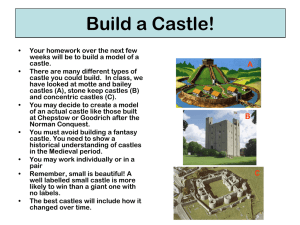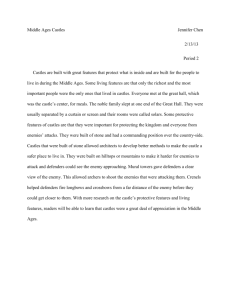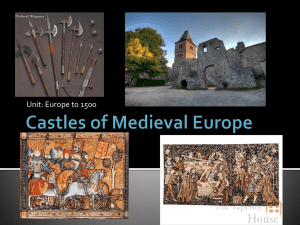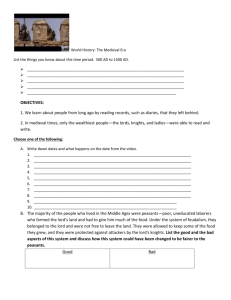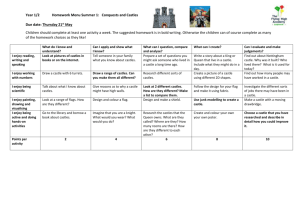Stone Keep Castles
advertisement
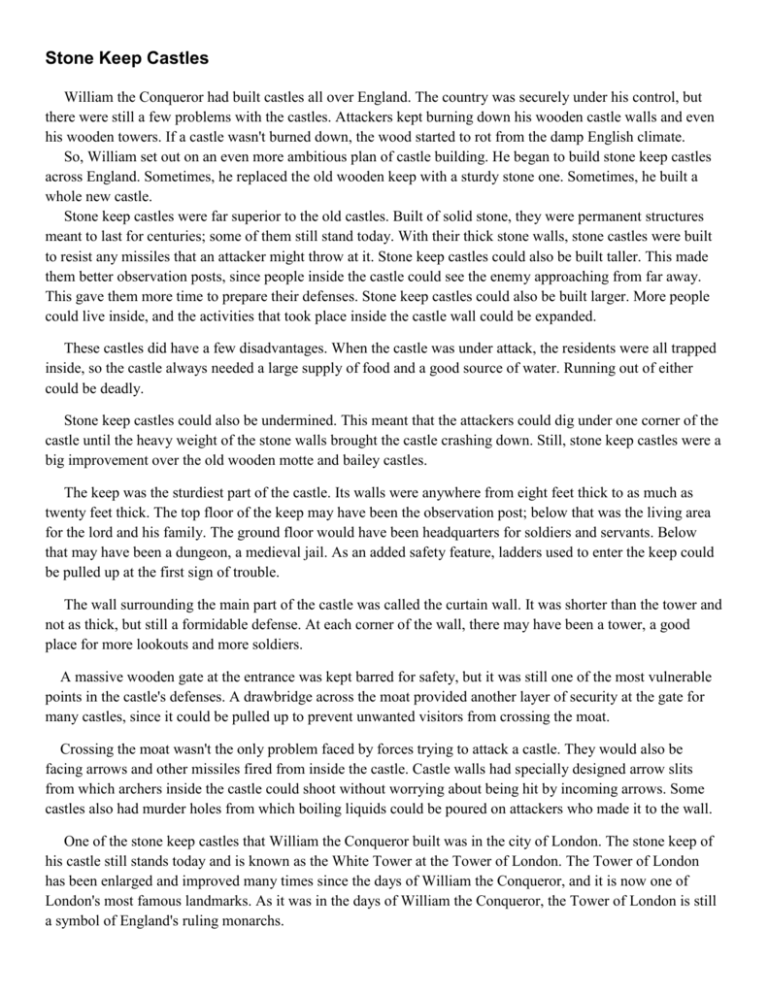
Stone Keep Castles William the Conqueror had built castles all over England. The country was securely under his control, but there were still a few problems with the castles. Attackers kept burning down his wooden castle walls and even his wooden towers. If a castle wasn't burned down, the wood started to rot from the damp English climate. So, William set out on an even more ambitious plan of castle building. He began to build stone keep castles across England. Sometimes, he replaced the old wooden keep with a sturdy stone one. Sometimes, he built a whole new castle. Stone keep castles were far superior to the old castles. Built of solid stone, they were permanent structures meant to last for centuries; some of them still stand today. With their thick stone walls, stone castles were built to resist any missiles that an attacker might throw at it. Stone keep castles could also be built taller. This made them better observation posts, since people inside the castle could see the enemy approaching from far away. This gave them more time to prepare their defenses. Stone keep castles could also be built larger. More people could live inside, and the activities that took place inside the castle wall could be expanded. These castles did have a few disadvantages. When the castle was under attack, the residents were all trapped inside, so the castle always needed a large supply of food and a good source of water. Running out of either could be deadly. Stone keep castles could also be undermined. This meant that the attackers could dig under one corner of the castle until the heavy weight of the stone walls brought the castle crashing down. Still, stone keep castles were a big improvement over the old wooden motte and bailey castles. The keep was the sturdiest part of the castle. Its walls were anywhere from eight feet thick to as much as twenty feet thick. The top floor of the keep may have been the observation post; below that was the living area for the lord and his family. The ground floor would have been headquarters for soldiers and servants. Below that may have been a dungeon, a medieval jail. As an added safety feature, ladders used to enter the keep could be pulled up at the first sign of trouble. The wall surrounding the main part of the castle was called the curtain wall. It was shorter than the tower and not as thick, but still a formidable defense. At each corner of the wall, there may have been a tower, a good place for more lookouts and more soldiers. A massive wooden gate at the entrance was kept barred for safety, but it was still one of the most vulnerable points in the castle's defenses. A drawbridge across the moat provided another layer of security at the gate for many castles, since it could be pulled up to prevent unwanted visitors from crossing the moat. Crossing the moat wasn't the only problem faced by forces trying to attack a castle. They would also be facing arrows and other missiles fired from inside the castle. Castle walls had specially designed arrow slits from which archers inside the castle could shoot without worrying about being hit by incoming arrows. Some castles also had murder holes from which boiling liquids could be poured on attackers who made it to the wall. One of the stone keep castles that William the Conqueror built was in the city of London. The stone keep of his castle still stands today and is known as the White Tower at the Tower of London. The Tower of London has been enlarged and improved many times since the days of William the Conqueror, and it is now one of London's most famous landmarks. As it was in the days of William the Conqueror, the Tower of London is still a symbol of England's ruling monarchs.


